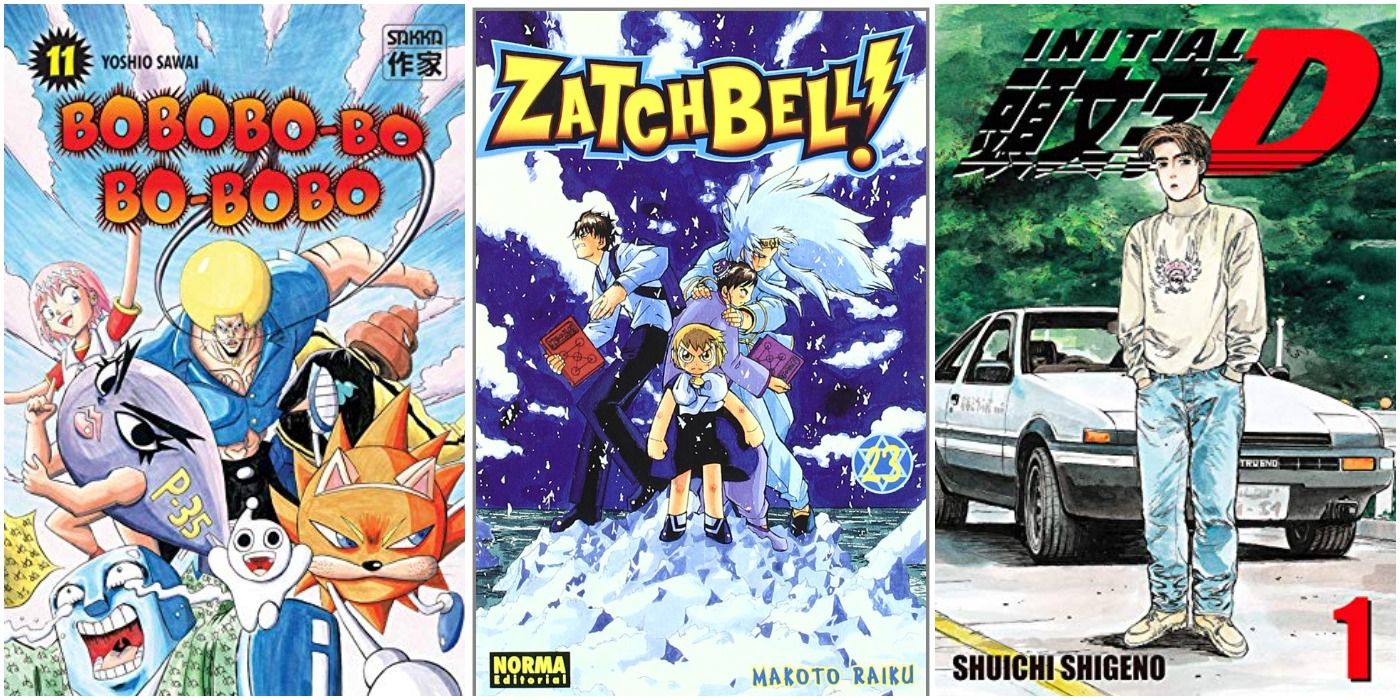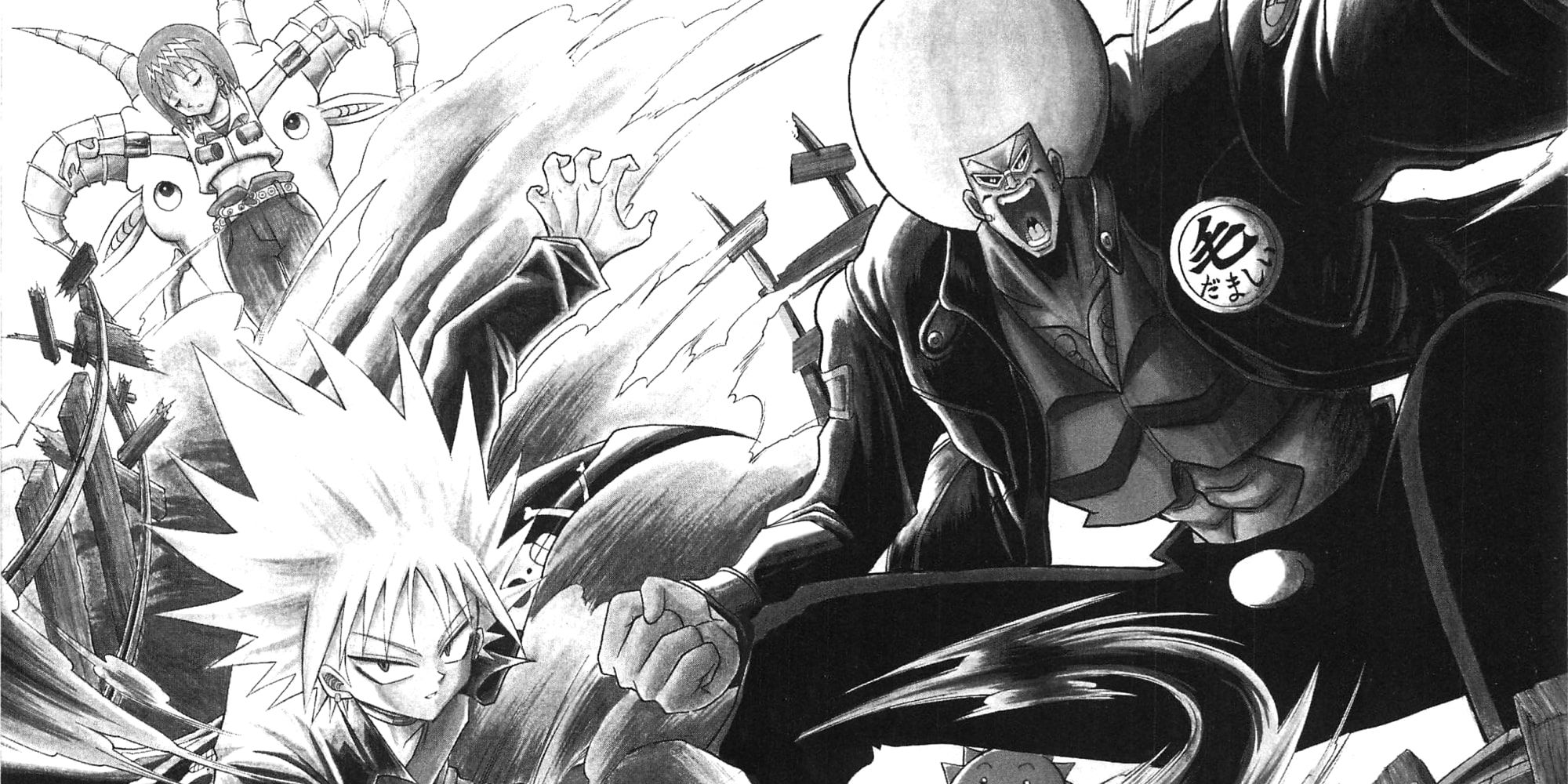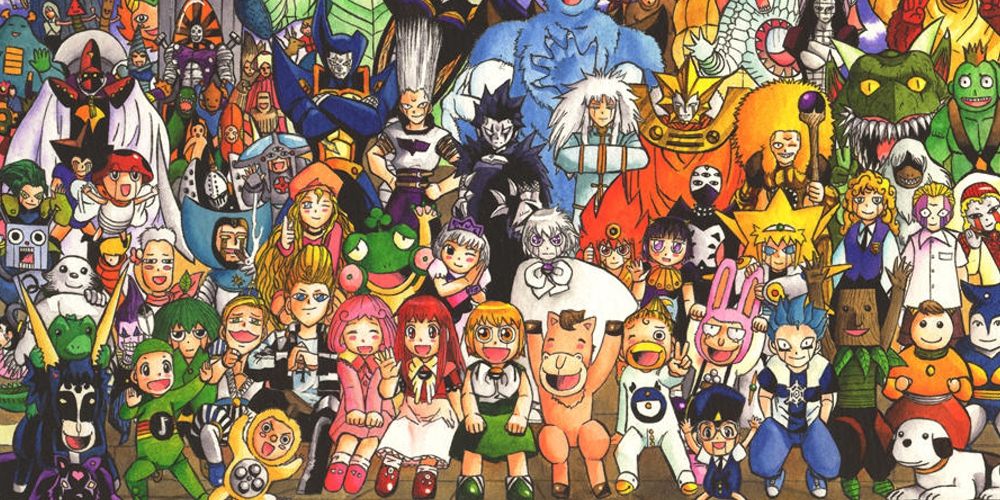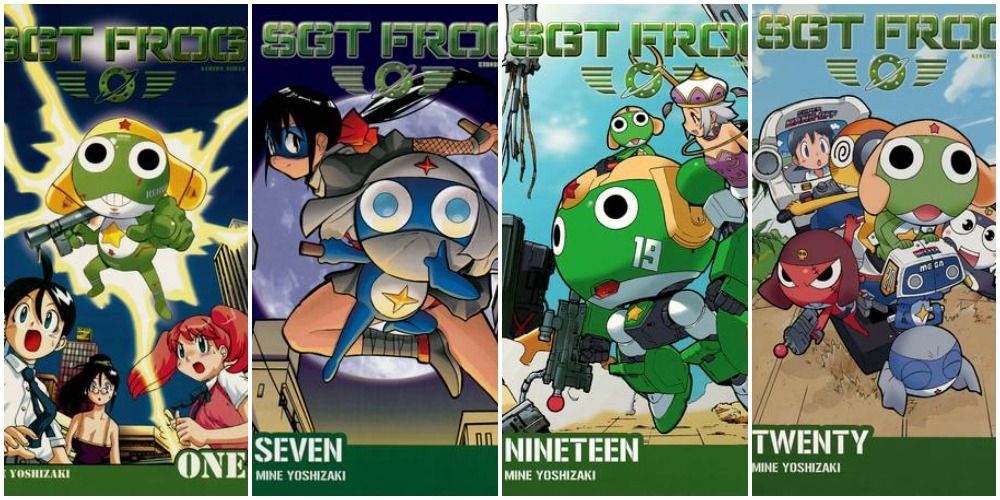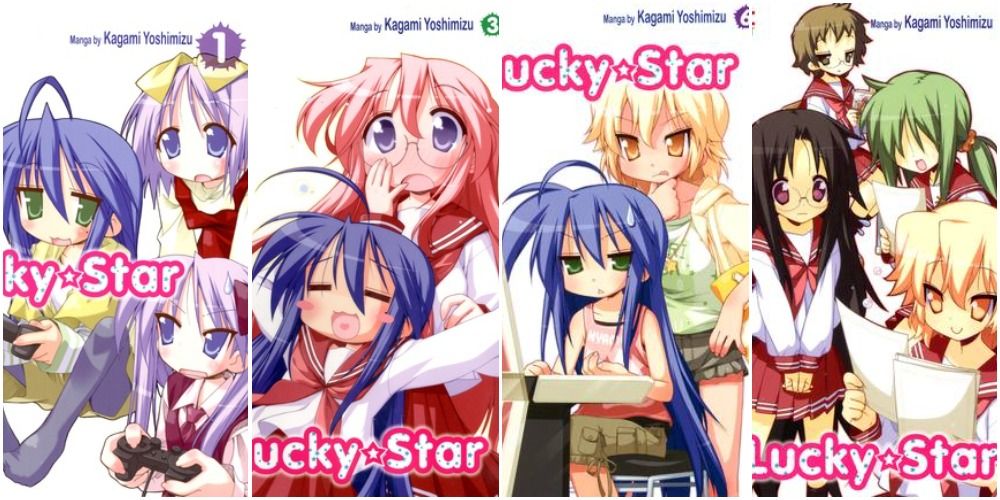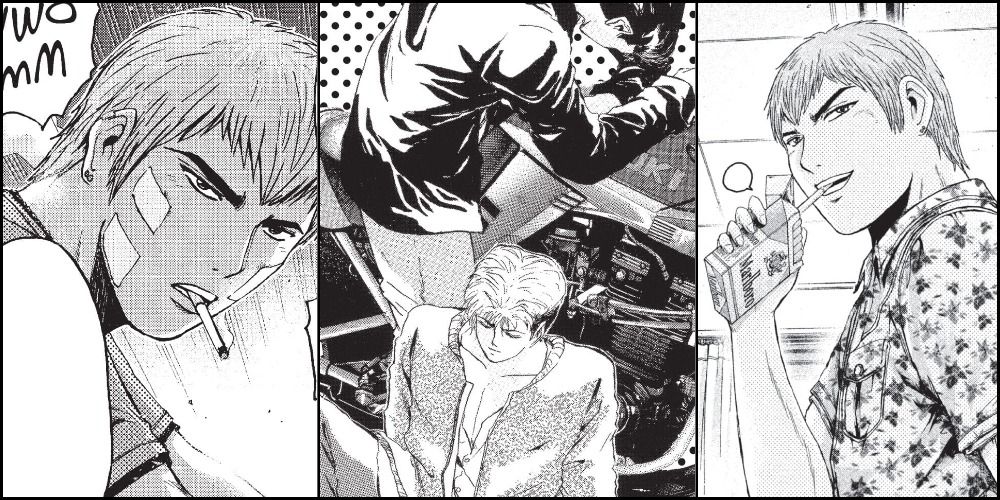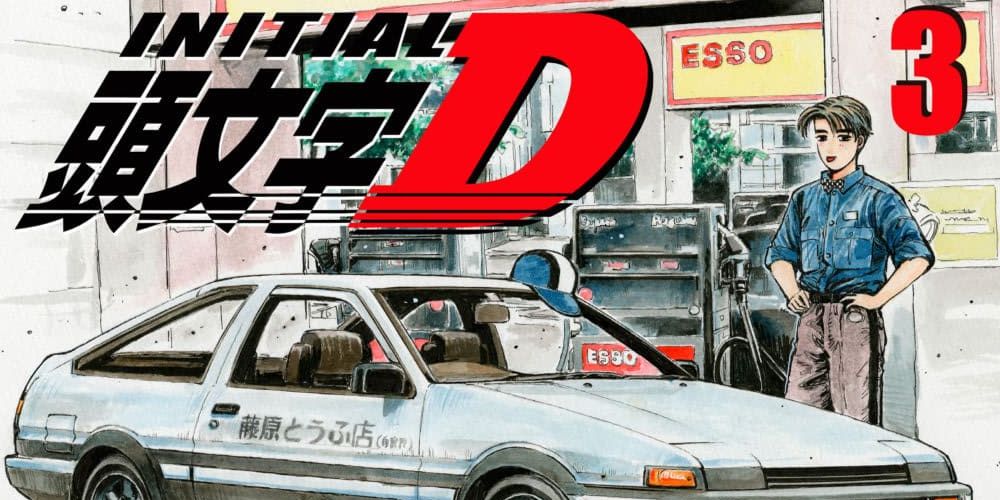All manga readers expect their favorite series to have conclusions and writers rarely intend to leave stories incomplete. Unfortunately, some manga do go unfinished because of cancellations or even the untimely deaths of the mangaka in the cases of Crayon Shin-Chan, Berserk, With the Light, and more.
Unlike those aforementioned cases, the manga in this list were completed (or are still ongoing) and physically released in their home country of Japan but were never fully translated and physically released in the United States. As much as fans in America would like to own the missing volumes in print, it seems like an impossibility for these six series.
6 Bobobo-Bo Bo-Bobo Was The Best Kind Of Weird
Bobobo ran for 21 volumes in Japan where the main characters, Bobobo, Don Patch, Beauty, and more of their friends fought countless hair hunters who sought to rid all sentient life of their hair. Bobobo and his friends fought against the Maruhage Empire using hair-based combat and as many jokes as could fit on a single page. It was weird, but that allowed Bobobo and his revolving cast of friends to do practically anything to win battles and make the reader laugh.
The only thing weirder than Bobobo-bo Bo-bobo would be its strange American release. When VIZ Media translated the manga for U.S. publication, they labeled the 11th Japanese volume as the 1st in America and just continued it from there. Bobobo's story isn't particularly confusing or complicated, but it made some readers feel like they were missing out on more of the story. As if the strange start wasn't bad enough, VIZ Media canceled the manga at Volume 5 (15 in Japan), which left 6 additional volumes and an entire sequel series untranslated.
5 Zatch Bell Was Amazing But Was Treated Poorly In America
Zatch Bell, or Konjiki no Gash Bell!! in Japan, is the story of a middle schooler named Kiyomaru who languished in boredom until he met a strange, puppet-like boy named Zatch Bell. Zatch came from the Mamodo World to battle 99 other Mamodo for the right to become the next Mamodo King. Zatch had powerful lightning powers but required a partner to activate them, sort of like Ash commanding Pikachu. Over their many battles, Zatch became immensely powerful and Kiyomaru's reclusive attitude and boredom were challenged by camaraderie and adventure.
Zatch Bell ended its U.S. publication at Volume 25, just 8 volumes short of completing Zatch and Kiyomaru's adventure. In Japan, readers were able to see some of the most intense battles and gripping storylines play out as intended but volume 25 ended in the middle of a battle with no result for American readers. Despite its unpublished conclusion and heavy censorship in America, Zatch Bell has remained fondly remembered by its fans.
4 Sgt. Frog Deserved More Attention And More Volumes
Sgt. Frog, known as Keroro Gunso in Japan, was a manga by Mine Yoshizaki that followed 5 amphibious aliens from Planet Keron out to conquer Earth. The aliens successfully invaded Earth, made human friends, and found homes, but never quite figured out the conquering part. Each chapter of the manga followed the alien leader, Keroro, as he led his platoon on new planet-conquering schemes that inevitably failed when their human friends discovered and foiled their plots.
The manga is still slowly ongoing in Japan with 31 published volumes but America only received 21 volumes. Oddly enough, Volume 20 would have been a better stopping point for the U.S. releases than Volume 21 since it was a special "Full-Length Feature" that played out through the entire volume instead of the usual chapter-by-chapter episodic nature of each other volume. Instead, Sgt. Frog's publication was cancelled with no conclusion in Volume 21, which was an unsatisfying ending.
3 Lucky Star Fans Had Bad Luck
Lucky Star is more well-known for its anime adaptation by Kyoto Animation, but it still started as a simple manga that found comedy in the mundane aspects of everyday life. Each major character in Lucky Star had an interest or lifestyle that Lucky Star's author, Kagami Yoshimizu, found comedy in. These subjects included; coming from a wealthy family, being dissimilar twins, being an artist, or being a fan of all things Otaku. Konata Izumi was the series' main character, and when not commenting on her favorite video games and anime, she was usually the one bringing up odd topics or trying to tell jokes.
The first 8 volumes of Lucky Star were physically released in the United States and are also available for digital purchase on viz.com but Japan has received a total of 10 Lucky Star volumes as well as additional spin-off comics, light novels, and video games that never made it to the States.
2 Some Parts Of Great Teacher Onizuka Were Published Physically, Some Digitally, And Some Never Made It To America At All
GTO: Great Teacher Onizuka was the story of a former gang member named Onizuka who strove to become a great teacher. Although Onizuka was rarely proficient at actual academics, he excelled at getting to know his students and frequently risked his life to teach them life lessons and earn their trust. Despite its vulgar and over-the-top protagonist, the series could be heartwarming and genuine, which is what has allowed its prequels, sequels, and spin-offs to publish for over 30 years.
GTO's American distribution has been unconventional. A prequel series called GTO: The Early Years and GTO: Great Teacher Onizuka itself were both published physically, in their entirety, by Tokyopop in America. Two sequels, GTO: 14 Days In Shonan and GTO: Paradise Lost were only translated and released digitally in America. Finally, the two remaining series in the Onizuka epic never made it to America at all, being GT-R: Great Transporter Ryuji and Bad Company.
1 Right Now Would Be The Perfect Time To Fully Print Initial D
Due to its anime's place in meme culture, Initial D might be the most famous manga on this list. It primarily focused on the illegal downhill street races held between the main character, Takumi, and his numerous challengers. The manga focused heavily on the specifics of car engines and drifting strategies but also took time to explore the lives of its main characters and romanticize its environments and portrayal of street car culture.
Initial D's entire first part, Volumes 1 through 17 were translated and physically published in America by Tokyopop, and these American releases continued until stopping at volume 33. Years later, Kodansha comics obtained the rights to digitally release those 33 volumes as well as the remaining 15 volumes that never saw a U.S. release. Even though Initial D was able to complete its American releases, the sequel series, MF Ghost, has never been officially released in America in any form.

